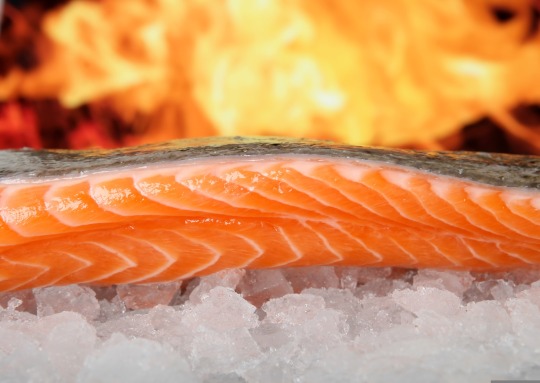"From Sea to Pan: The Freshest Seafood Delivered to Your Doorstep"
Don't wanna be here? Send us removal request.
Text
0 notes
Text
"Seafood is the symphony of the ocean, a medley of textures and tastes that dance on the palate"
0 notes
Text

From Sea to Table
Seafood is a highly perishable commodity, and transportation is a critical juncture in the cold chain. Whether by land, sea, or air, seafood must be transported in refrigerated containers to prevent spoilage. Specialized vehicles and shipping containers with temperature-monitoring systems ensure that the seafood stays within the prescribed temperature range throughout the journey.
0 notes
Text
Navigating the Seas of Freshness: The Cold Chain in Seafood Supply
Introduction:
The global seafood industry is a vast and intricate network that connects oceans, fisheries, processing plants, and consumers. One of the key elements ensuring the quality and safety of seafood products is the cold chain. This comprehensive system of temperature-controlled logistics plays a pivotal role in preserving the freshness and integrity of seafood from the moment it is caught until it reaches your plate.
The Journey Begins: Harvesting and Handling
The cold chain in the seafood industry commences at the source – the moment seafood is harvested from oceans, rivers, or aquaculture farms. It is crucial to maintain low temperatures immediately after catch to slow down the natural enzymatic and bacterial processes that can compromise quality.
Fishermen and fish farms employ methods such as ice slurry, refrigerated seawater, or onboard refrigeration to keep the catch at optimal temperatures. Rapid chilling prevents the growth of harmful bacteria and helps preserve the texture, flavor, and nutritional value of the seafood.
Processing and Packaging:
Once the seafood reaches shore, it undergoes processing to transform it into consumer-ready products. This stage involves cleaning, filleting, freezing, or canning, all of which need to be conducted under controlled temperatures. Modern processing facilities are equipped with advanced freezing and refrigeration technologies to ensure swift and efficient temperature management.
Packaging also plays a crucial role in maintaining the cold chain. Vacuum-sealing, modified atmosphere packaging, and insulated containers are employed to protect seafood from exposure to air and temperature fluctuations during transportation.
Transportation: From Sea to Table
Seafood is a highly perishable commodity, and transportation is a critical juncture in the cold chain. Whether by land, sea, or air, seafood must be transported in refrigerated containers to prevent spoilage. Specialized vehicles and shipping containers with temperature-monitoring systems ensure that the seafood stays within the prescribed temperature range throughout the journey.
Global seafood trade relies heavily on international shipping, making it imperative to maintain the cold chain across diverse climates and time zones. Advanced refrigeration technology, combined with efficient logistics management, allows seafood to traverse continents while preserving its freshness.
Retail and Consumer Handling:
Upon reaching the destination – be it a seafood market, grocery store, or restaurant – maintaining the cold chain becomes the responsibility of retailers and consumers. Cold storage units, display cases, and transportation vehicles must continue to uphold the required temperature conditions.
Consumers also play a role in sustaining the cold chain. Proper storage, handling, and cooking practices are essential to ensure that seafood maintains its quality and safety. From the grocery store to the kitchen, adherence to recommended storage temperatures and handling guidelines is crucial.
Challenges and Innovations:
The cold chain in the seafood industry faces several challenges, including infrastructure limitations, fluctuating demand, and environmental concerns. However, ongoing innovations are addressing these issues. From the development of more energy-efficient refrigeration systems to the implementation of blockchain technology for traceability, the seafood industry is continually evolving to enhance the efficiency and sustainability of the cold chain.
Conclusion:
The cold chain in the seafood industry is a complex and interconnected web of processes designed to deliver fresh, safe, and high-quality products to consumers worldwide. From the moment seafood is harvested to its arrival at your table, meticulous temperature control is the key to preserving the natural attributes of the ocean's bounty. As the industry embraces technological advancements and sustainable practices, the cold chain continues to evolve, ensuring that seafood enthusiasts can enjoy the fruits of the sea with confidence and satisfaction.
1 note
·
View note